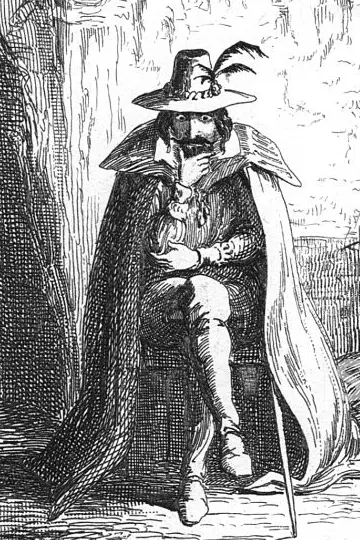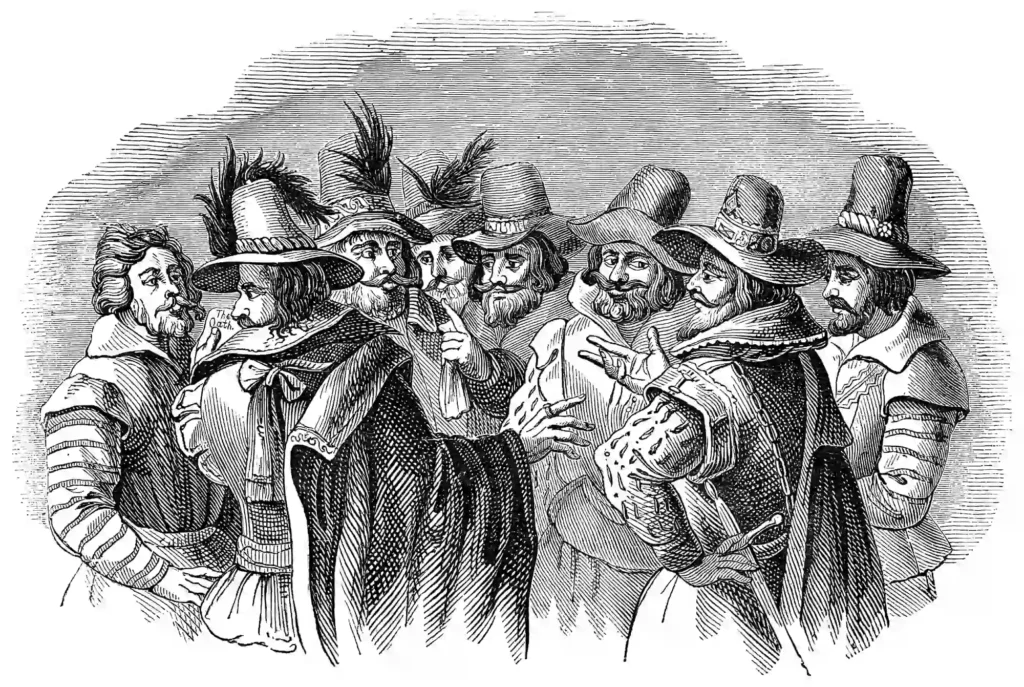Who was Guy Fawkes?
Everyone knows November 5th is a day filled with fireworks and giant bonfires. It’s about burning quirky effigies and eating hearty soups whilst drinking cider. But there’s quite an exhilarating story behind this uniquely British festival – and it all centres around a bloke called Guy Fawkes.
In this blog, we’ll be exploring the history of Guy Fawkes and how he ended up being the face of this funky November occasion.
Guy Fawkes Early Years
Guy Fawkes was born in York on April 13th, 1570. He had three siblings. His dad, Edward, worked as a proctor, and his mom, Edith, was from a Church of England family. But Edith’s side were recusant Catholics, and one was even a priest.
Guy’s exact birth date isn’t clear. He was baptized on April 16th, a few days after his birth. He had two sisters, Anne and Elizabeth, and his older sister died when she was just seven weeks old. Guy was the only boy.
When Guy was eight, his dad died. Later, his mom married a Catholic man named Dionis Baynbrigge. Guy might have become Catholic during this time or while he was at St. Peter’s School in York. The school’s governor had been in prison for not following the Church of England, and the headmaster’s family were Catholics too.
Some of Guy’s classmates, like John and Christopher Wright, later joined him in the Gunpowder Plot.

Guy Fawkes in the Military
After finishing school, Guy started working for Anthony Browne, 1st Viscount Montagu, but they didn’t get along. However, Anthony-Maria Browne, the 2nd Viscount Montagu, later hired him again.
Tired of this kind of job and life in England, Guy sold his estate in Clifton in 1591 and went to Europe. He wanted to join the Eighty Years War, where Catholic Spain fought against the Dutch Republic and later France. It was during this time in Spain that he started using the name Guido Fawkes.
Guy fought alongside Sir William Stanley, an English Catholic and experienced commander. Sir William was once respected by Queen Elizabeth I, but relations soured when he switched sides to Spain. Guy served as a junior officer and, after his successful fight in the siege of Calais, he was recommended for a captain’s position.
Returning to England
In 1603, Guy Fawkes decided to return to England where he became associated with a group of English Catholics led by Robert Catesby. Catesby’s intention was to assassinate King James, who was a Protestant, and install his daughter, Princess Elizabeth, as the ruler.
The group devised a plan to detonate explosives beneath the Parliament building, aiming for a significant act of rebellion. Their goal was to overturn the government and establish a Catholic regime in England.
Planning the Gunpowder plot
The first meeting among the five conspirators happened on Sunday, May 20th, 1604, at the Duck and Drake. Exiled Welsh spy Hugh Owen introduced Fawkes to Thomas Wintour, an important figure in the plan. Fawkes and Wintour got along well because they shared similar militant views and understood the challenges of involving the Spanish.
Later that year, Fawkes took on a caretaker role in a London house, providing the group with a chance to dig a tunnel. Using the alias John Johnson, Fawkes and his accomplices started digging, although there was no solid evidence of the tunnel. It’s possible the government spread rumours about it.
In 1605, Fawkes tried again to secure support abroad for their plot. However, Robert Cecil, 1st Earl of Salisbury, learned about Fawkes and the scheme during this trip. By late August 1605, Fawkes returned to England empty-handed. In October, the group finalised their plan, assigning Fawkes the task of lighting the gunpowder fuse and escaping across the Thames.

Getting caught
The plan, however, didn’t succeed. Lord Monteagle had received a tip in a letter, which he later showed to King James. The King ordered the cellars underneath the Parliament to be searched and that’s where they found Fawkes, who was keeping guard.
Fawkes introduced himself as John Johnson during the interrogations. He admitted he was there to blow up the Parliament and in an act of defiance also noted he regretted the plan failed. Indeed, this resulted in the admiration of King James.
Guy Fawkes meets his death
This didn’t result to much as the King later ordered Fawkes to be tortured in order to learn the names of his co-conspirators. Fawkes remained silent at first but revealed his identity the next day. The next year, Fawkes and his co-conspirators were brought to justice. He was found guilty and hanged on January 31st, 1606.
Fawkes and his fellow conspirators launched a plot that foiled but which we still reminiscence by lighting bonfires and watching fireworks. Sometimes the legacy of Guy Fawkes is commemorated by toasting, and stating how he was “the last man to enter Parliament with honest intentions”.
The story of Guy Fawkes is a fascinating one. Knowing his journey definitely adds another element to November 5th celebrations.
Share to Social Media
Subscribe for the latest news and blog updates
You might also be interested in
Fireworks continue to be a beloved choice for entertainment, offering endless fun and versatility. With each passing year, new and...
Brightstar has once again raised the bar with their fireworks collection. Established in 1992, Bright Star Fireworks continues to uphold...
Get ready to be blown away by the latest offerings from our fantastic new fireworks providers! This year, Brothers Pyrotechnics...



